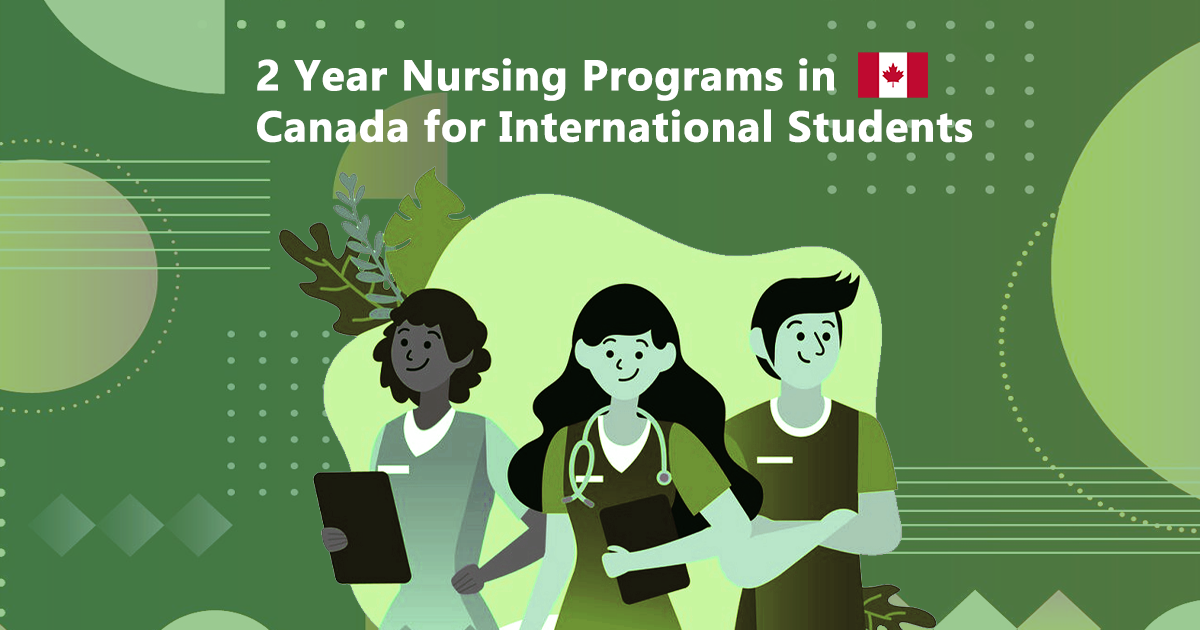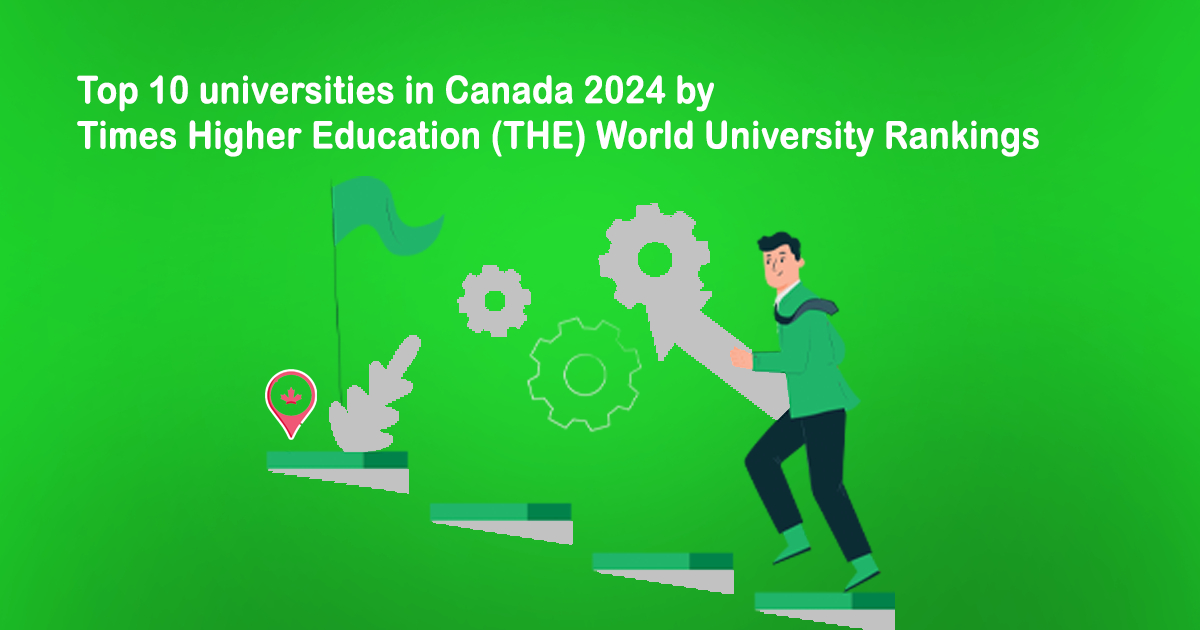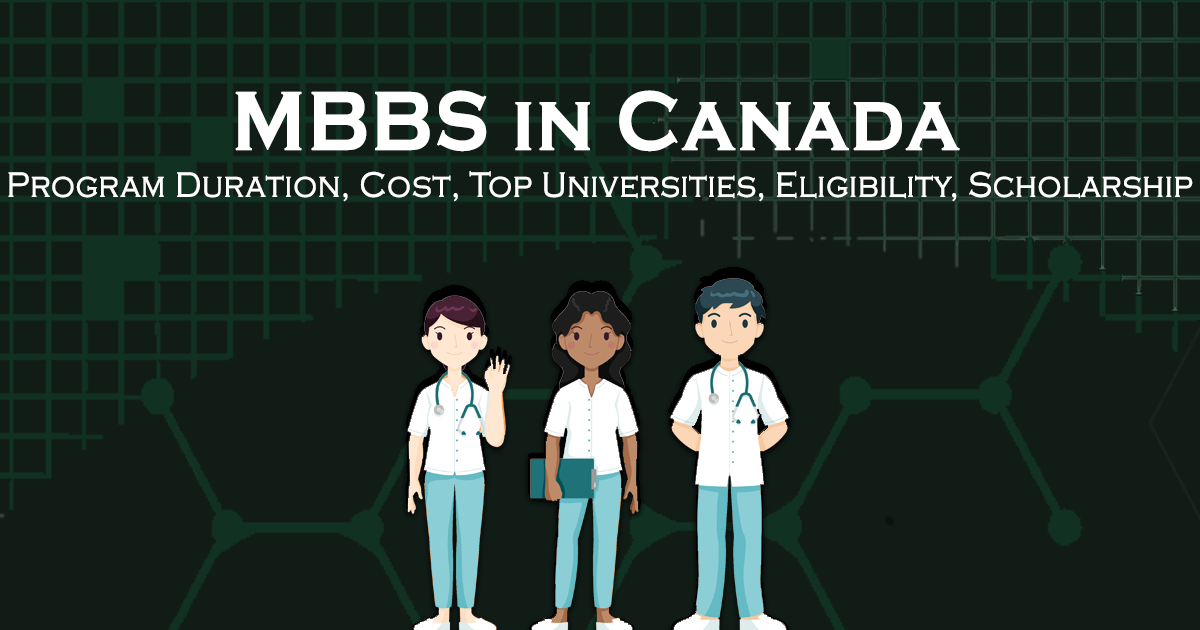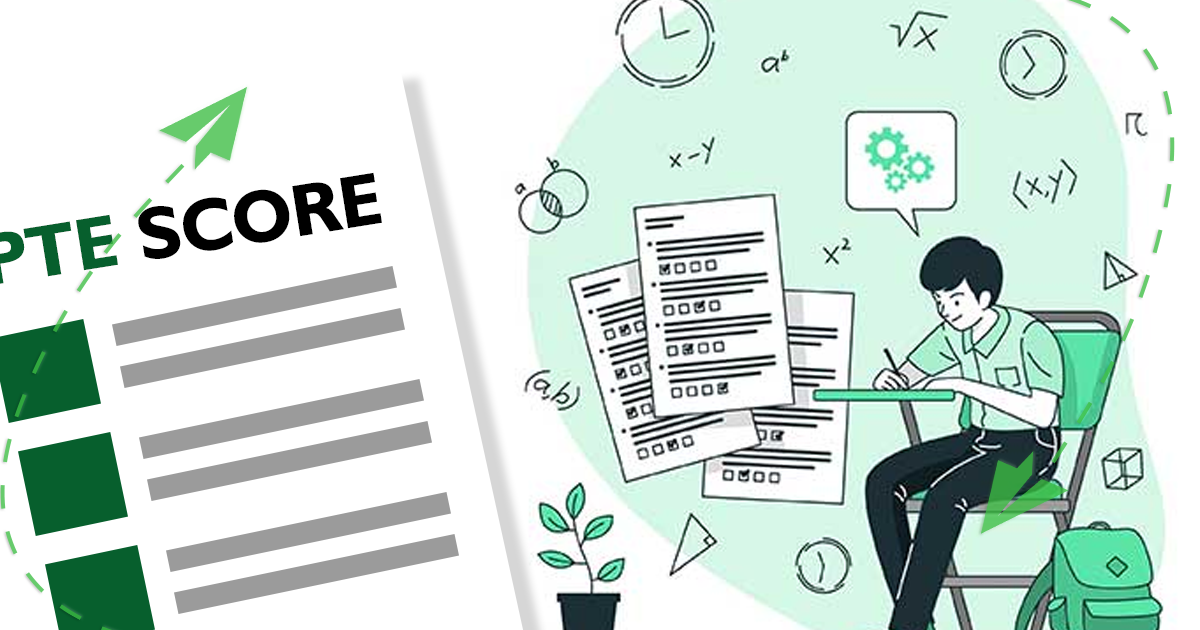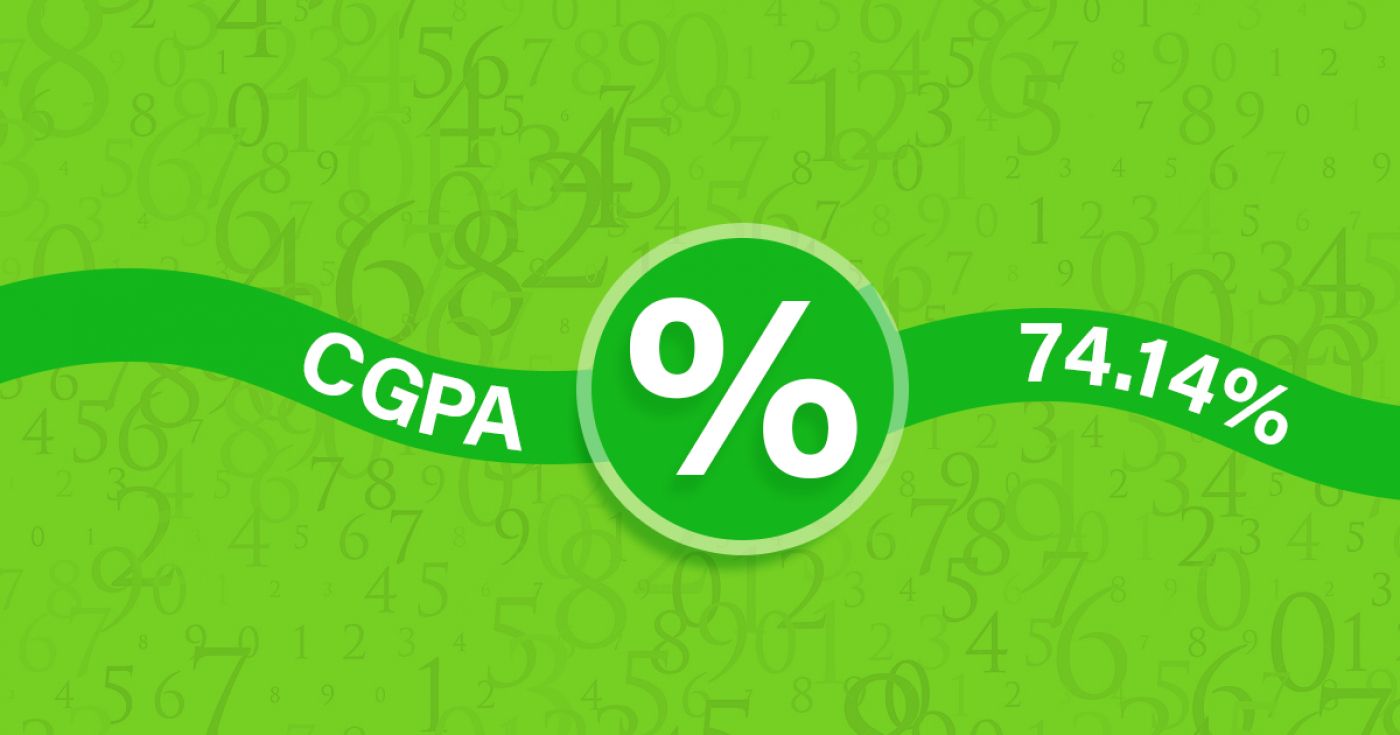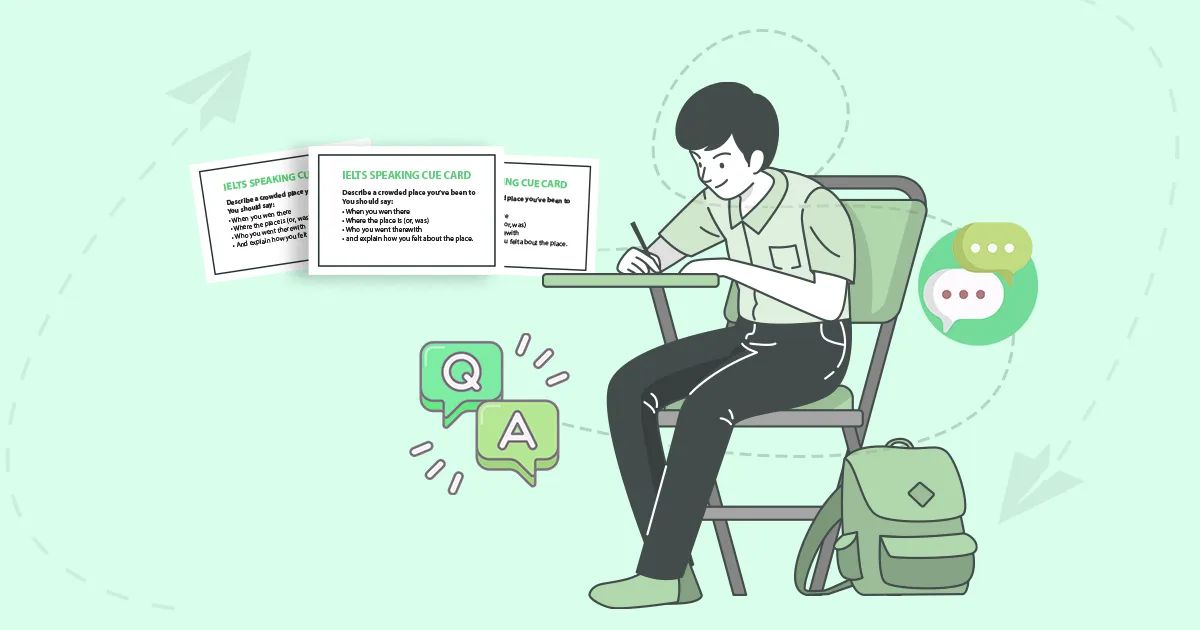Diploma in Radio Broadcasting
at Humber College North Campus Canada
Overview
Humber’s Broadcasting - Radio diploma program is designed to prepare you for the performative, creative, technical and business aspects of the radio and audio world. You will learn about radio station operations, broadcast and production equipment, and the fundamentals of gathering, writing, producing, and delivering content for all genres of radio and podcasting. You will also gain in-demand skills in station management, sales, marketing, news, programming and market research.
Your studies will combine practical and theoretical aspects of radio broadcasting including effective speaking skills that can be applied to announcing, and news and sports delivery. You will also be trained in writing and producing for radio using industry software and audio equipment - to fully prepare you for a variety of careers in radio.
Students in our program contribute to 96.9 FM Radio Humber, our fully licensed campus and community radio station, regulated by the Canadian Radio-Television Telecommunications Commission (CRTC). Our signal transmits in the GTA and our station can be heard world-wide via radio.humber.ca. Your radio broadcasting education will include the opportunity to contribute to Radio Humber by creating original content in our digital studios and bringing it to life for our listeners.
Work Placement
- Students will participate in a mandatory work placement during the last semester of study. Our placement partners include 680 News, Global News Radio 640 Toronto, KiSS 92.5, Rogers Sportsnet 590 The FAN, 102.1 The Edge, Indie 88, Z103.5 FM, Newstalk 1010, and CBC Radio, among others.
30
Application Processing Days
Under Graduate
Program Level
Fact & Figures
Full Time On Campus
Study Mode
24
Duration
Humber College North Campus
Location
Diploma in Radio Broadcasting Assistant Fee
$17608
Tuition Fee
$12000
Average Cost of Living
$75
Application Fee
Diploma in Radio Broadcasting Admissions Requirements
- Minimum Level of Education Required: To be accepted into this program, applicants must have Grade 12 / High School Diploma or equivalent including the following required course(s):
- Grade 12 English (ENG4C or ENG4U or equivalent)
- Three Grade 11 or Grade 12 C, M or U courses in addition to those listed above

Get superfast admissions at top Diploma in Radio Broadcasting institutes in 2024
Benefits of choosing
➤Admission’s guaranteed at Top institutes across the world.
➤Enjoy exclusive application fee waiver’s with Edmissions.
➤Unlimited FREE Counselling sessions with Edmission’s
Experts
➤Get Tips from industry veterans to crack the IELTS exam in 1
week.
➤Assistance with scholarships, loans, forex, student accommodation and visa guidance.
Work Permit Canada
Students who wish to work in Canada require a work permit to do so. A student in Canada can work part-time during the course of his studies and full-time during holidays and semester breaks and post the completion of their course/program.
Rules for getting a part-time work visa in Canada
You can also work part-time on campus at your university.
Work Permit
Duration
Your part-time work permit will be valid for as long as you have a valid study permit.
Working Hours
20 Hours/Week
As a full-time student, you can work for a maximum of 20 hours a week. However, you can work full- time during holidays and breaks.
Document Required to Work in Canada
List
To apply for a work permit, you will need a study permit that mentions that you are allowed to work part-time on campus.
Social Insurance Number
Study Permit
You will need a Social Insurance Number (SIN) to Service Canada. if you wish to work in Canada during the course of your studies. To apply for the same, you need a valid study permit, and you should be a full- time student at a recognized university.

You can work part-time off-campus if you are studying in the Quebec province.
Duration of Work Permit Canada
Your part-time work permit will be valid for as long as you have a valid study permit.
Work Hours Canada
As a full-time student, you can work for a maximum of 20 hours a week. However, you can work full- time during holidays and breaks.
Document Required to Work in Canada
To apply for a work permit, you will need a study permit that mentions that you are allowed to work part-time on campus.
Social Insurance Number
You will need a Social Insurance Number (SIN) to Service Canada if you wish to work in Canada during the course of your studies. To apply for the same, you need a valid study permit, and you should be a full- time student at a recognized university.
Working after completing your course
In Canada, you will need a work permit to get a full-time job in Canada after finishing your studies. You chose a work permit like the Post-Graduation Work Permit (PGWP) if you wish to stay back in Canada and work full-time.
Visit Government of Canada Website for more detail
Post-Graduation Work Permit (PGWP)
The Post- Graduation Work Permit (PGWP) allows you to work for three years in Canada if you have completed a two years degree or more.
Application
how can i apply
You can either apply online or download the form and mail the application along with the required documents. Pay your fee and then wait for the decision to come.
Application Documents Required
List
To apply for the work visa, you need a degree from a recognized and accredited Canadian University along with an intention to stay and work in Canada only temporarily.
When to Apply?
One can apply for the full-time work permit in the first three months post the completion of their course during which the study permit is still valid.
How long does it take?
90 days
You will have to wait for 90 days for the decision on your work permit.
Duration
3 Years
The work permit is valid for 3 years if you have completed a two years degree program or more.
Fees
CAD 255
The fee for the work permit is CAD 255 plus the holder fee and the work permit processing fee.
Monthly Wages
CAD 1,600
An applicant is guaranteed a minimum salary of CAD 1,600 per month while working in Canada. This amount though varies on the job and the province you are working in.
Work Hours Canada
No Limit
There is no maximum limit, and you can work for as many hours as you want on the full-time work permit.

Required Documents
List
To apply for the work visa, you will need the following documents:
- Forms: IMM 5710, IMM 5476 and IMM 5475;
- Graduation Proof
- Proof of payment of work permit fees
- Copies of your travel and identification documents, passport pages and current immigration document.
Till a decision is made on your work visa, you can continue to work full time. All you need to have is your completed degree, should have applied for the permit before the expiry of your study permit and you should be allowed to work off-campus.
Information
Disclaimer
The information provided about the work permit is true and complete to the best of our knowledge. All recommendations are made without any guarantee on the part of the author or the publisher. The author and the publisher, therefore, disclaim any liability in connection to and with the use of this information.
Detailed Program and Facts
30
Application Processing Days
Full Time On Campus
Program Intensity
Under Graduate
Program Level
24
Duration
Study Visa
Student Visa For Canada
Any student who wishes to study in Canada requires a student visa. Some of the essential information for the application process is given below.
When Should I Apply?
4 to 6 months
Ideally, one should apply for the study permit at least 4 to 6 months before the commencement of your course/program.
Bank Account
No Need!
There is no need for a blocked bank account to apply for a student visa to Canada.
Duration of visa
Course Duration + 3 Months
The student visa is valid for the entire period of your course plus three months.
Time to Wait for Visa
35 Days
It takes time. It might take up to 35 days post your interview for the application process to complete and for you to finally receive your visa.
Appointment
Required
It varies from applicant to applicant, but one may have to take part in one or two visa appointments, namely a medical examination and a visa interview.
How you can apply
Application Process
An applicant can either apply online or offline by visiting a visa application centre and submitting their documents. After the analysis of your application, you might be called for an interview.
Fee
Visa Fee
The visa application fee for Canada is CAD 150.
Minimum Funds
833 CAD, 917 CAD
You require a minimum monthly amount to be deposited into your account to prove that you can sustain yourself while studying in Canada. If you are studying in Quebec, you need to have a monthly minimum of CAD 917, and if you are studying in a province except for Quebec, you need to have a minimum of CAD 833 per month.
Any other expenses
Required
You will have to pay a medical examination fee and a visa application service fee to the tune of CAD 15 if you visit a visa application centre to apply for your visa.

Medical Examination
Required
One has to undergo a series of medical examinations to be deemed fit for a student visa of Canada. The tests mostly include blood and urine tests, chest x-rays and other organ checkups.
Language Skills
Not Required
one doesn’t need to prove their language skills in applying for a Canadian Visa.
Disclaimer: The information provided about the work permit is true and complete to the best of our knowledge. All recommendations are made without any guarantee on the part of the author or the publisher. The author and the publisher, therefore, disclaim any liability in connection to and with the use of this information.
Other Courses by Humber College North Campus,Canada
Health Sciences, Nursing and Emergency Services
Diploma in Occupational Therapist Assistant and Physiotherapist Assistant
Humber’s Occupational Therapist Assistant/Physiotherapist Assistant (OTA/PTA) diploma program was the first in Ontario to provide formal educational preparation for occupational therapist assistants (OTAs) and physiotherapist assistants (PTAs) and continues to provide quality education. You will learn to assist in the implementation of rehabilitation treatment plans and programs developed to promote clients’ independence, activities and function. Areas of focus include restoring and maximizing physical function and occupational performance, ultimately enabling clients to effectively utilize their abilities in movement, daily functioning and activity while promoting overall well-being.
Practise your skills and acquire hands-on experience during over 600 hours (16 weeks) of unpaid work placements. These placements are arranged by the program fieldwork placement advisor during Semester 2, Semester 3 and Semester 4. You will have the opportunity to be exposed to leading-edge therapeutic skills, equipment and health-care facilities. This program offers the privilege of participating in clinical placements in occupational therapy and physiotherapy at some of the top teaching hospitals in Canada.
There are many reasons why a person may require occupational therapy and/or physiotherapy rehabilitation services. In addition to health and wellness promotion, individuals may require assistance returning to their activities of daily living and regular work due to falls, motor vehicle accidents, sports injuries, spinal cord injuries, stroke, mental health conditions and chronic illnesses such as cystic fibrosis and diabetes. If you relish the challenges of creative problem solving and critical thinking; have good physical health; and enjoy meeting people while wishing to work with those who are physically, developmentally, and/or emotionally challenged, a career as an OTA/PTA is for you. You will have the opportunity to work in a variety of environments such as acute care and community hospitals, rehabilitation facilities, long-term care facilities, private practice, and retail.
Work Placement
Practise your skills and acquire hands-on experience during over 500 hours of unpaid work placements. These placements are arranged by the program fieldwork placement advisor during Semester 2, 3 and 4.
You will have the opportunity to be exposed to leading-edge therapeutic skills, equipment and health-care facilities. This program offers the privilege of participating in clinical placements in occupational therapy and physiotherapy at some of the top teaching hospitals in Canada.
24 month
Duration
$ 16414
Tuition
Engineering & Technology
Certificate in Mechanical Techniques - Millwright
Humber’s Millwright Techniques certificate program is designed to help introduce prospective millwrights to the trade. The program aims to facilitate employment or provide the required components to enter into a millwright apprenticeship program, giving practical experience with trade regulations and practices. You will gain a solid understanding of the various technical theory and elements of the millwright trade. There will be a significant practical component to the program, and you will learn valuable skills by using the latest industry software programs and working in fully equipped up-to-date labs and shops. At Humber, skilled instructors highlight current trends within the industry and strive to duplicate situations that apprentices and skilled tradespeople will see in their everyday working life.
Canada currently faces a critical shortage of skilled workers. Skilled tradespeople will be increasingly in demand because of the rapid pace of technological changes and as current workers in the field begin to retire. According to the Working in Canada Report (Government of Canada), employment opportunities for licensed millwrights will be steady. Graduates of this program will find a range of employment opportunities through millwright apprenticeship programs, as well as positions associated with construction and industry work, metal fabrication, and green energy. There are many opportunities for advancement within this career path from supervisory to management positions.
12 month
Duration
$ 16414
Tuition
Engineering & Technology
Diploma in Electronics Engineering Technician
Humber’s Electronics Engineering Technician diploma program emphasizes electronic products, control systems and telecommunications - all built on a strong basis of computer and networking engineering. The program provides you with hands-on experience of electronic, analog, digital and programmable circuits. Our experienced faculty will teach you about computer programming, interfacing, local networks, radio frequency circuits, basic programmable logic controllers (PLC), industrial electronics, wired and wireless communication devices, and troubleshooting techniques. You’ll be taught how to embed these circuits into smart devices, industrial equipment, and consumer products.
You’ll also build and test circuit boards, learn electronics fabrication, program PLCs and design embedded systems in our state-of-the-art labs including a prototyping facility.
24 month
Duration
$ 16414
Tuition
Journalism & Media
Diploma in Broadcast Television Videography
Humber’s Broadcast Television/Videography (BRTV) diploma program will quickly prepare you for media content creation in operational and production roles. An intensive, behind-the-scenes look at broadcasting will give you a solid grounding in video production skills and broadcast standards. This program is an excellent starting point for anyone who wants to work behind the scenes in television production and features a wide variety of courses, as well as field experience opportunities, empowering graduates for success in the broadcast industry.
You will learn about:
- live studio and live remote broadcasting
- single camera location shooting
- video editing and audio mixing
- writing, planning and producing content
Your hands-on broadcasting education will be enriched by access to Humber’s high-definition television mobile truck—the most advanced of its kind among Ontario colleges. This compact, 35-foot television facility features state-of-the-art broadcast equipment including the latest cameras, video production switcher, digital recording system, broadcast graphics software and editing facilities.
Humber has a strong reputation in the television broadcasting industry.BRTV students regularly produce and live stream Humber Hawks varsity games and esport tournaments. BRTV students have also worked with Maple Leaf Sports and Entertainment (MLSE) on National Lacrosse League games and with Double Black Diamond Productions on internationally broadcast FIS World Cup events.
Note: the January 2020 program start will offer a hybrid curriculum for Semesters 1 and 2. A hybrid curriculum is a blend of face-to-face and online. Semester 2 will be offered from May to August. Semesters 3 and 4 (September to April) will be comprised of face-to-face class time.
24 month
Duration
$ 16394
Tuition
Computer Science & IT
Diploma in Computer Programming
Humber’s Computer Programmer diploma program is designed to prepare students for a wide variety of employment opportunities within the dynamic and ever-growing field of programming. In addition to learning programming in a variety of languages, from ASP.NET to XML, you will gain an in-depth understanding of industry-standard operating systems and how to use them. You will learn everything from C programming and shell scripts, to back end web design and Java. Upon graduation, you will be equipped with the up-to-date skills you need for success.
Our programming courses are designed to give you a thorough grounding in theory and practice including web development and design, distributed computing, database management and administration, project management, technical writing, information technology, and all facets of information systems. You will also learn about software development applications and follow the standards of planning, developing, testing and supporting software.
Canada has approximately 675,000 people working in information and communications technology (ICT), and about half of that workforce is in Ontario where the ICT industry accounts for over $30 billion in sales. Help satisfy the continuing demand for skilled IT professionals. Our graduates are able to work as computer programmers, junior web developers, junior database designers, junior software testers, customer support analysts, system co-ordinators, technical sales co-ordinators or technical support representatives.
24 month
Duration
$ 17618
Tuition
Computer Science & IT
Diploma in Computer Systems Technician - Information Technology Infrastructure and Services (Co-op Optional)
Computer Systems Technician - Information Technology Infrastructure and Services diploma program prepares you for careers in Information and Communications Technology (ICT). You will build a foundation in electrical and logic circuits, and programming. You will also learn about the main hardware and software components of your computer and different features to improve performance of computer systems. Curriculum in the program prepares you for the role of system administrator whose responsibilities include installation, configuration and managing various operating systems including Microsoft servers, different distributions of Linux supported by virtualization tools and network infrastructure, supporting data and network security. You will also learn about data centre technologies that support small- and medium-sized businesses. You will gain knowledge in supporting public, private, and hybrid cloud environments, and integrating cloud technologies and services.
The program will give you hands-on experience with various hardware platforms, protocols and services with a strong emphasis on network and data systems security. You will have access to state-of-the-art infrastructure to deploy and support Linux and Microsoft operating systems, and administer web servers and applications using different scripting environments.
Our faculty collaborates very closely with industry partners to keep the program and curriculum current and relevant, so that you have the knowledge and skills to work in a cutting-edge high tech sector. You will learn from professors who are experienced industry professionals who have strong connections to companies in the Greater Toronto Area (GTA).
Your group projects help you build essential customer service skills, and develop your interpersonal communications and teamwork skills. This, alongside your new comprehensive technical credentials, will give you a multi-dimensional background that employers want.
Learning Outcomes
Upon successful completion of the program, a graduate will:
- Analyze and resolve information technology problems through the application of systematic approaches and diagnostic tools.
- Support the implementation and administration of computer systems.
- Support the implementation and administration of networking solutions.
- Install, configure, troubleshoot, maintain, and upgrade components of computer systems.
- Install, configure, troubleshoot, maintain and upgrade components of networks.
- Use a variety of scripting tools and languages to automate routine tasks.
- Follow, monitor, and document data storage procedures designed to ensure the integrity of information.
- Apply knowledge of security issues to implementation of information technology solutions.
- Provide efficient and effective technical support to clients in a manner that promotes safe computing practices and reduces the risk of issue recurring.
- Conform to workplace expectations found in Information Technology (IT) environments.
Optional Co-op
- This program offers a co-op option. Co-op work terms enable you to apply your skills and knowledge in a work environment and gain valuable, practical experience related to your program of study. You will learn new skills, learn about the world of work and meet people in your profession.
- For students who are accepted into the program, one co-op work terms will take place between Semesters 3 and 4. There are limited spaces in the co-op option. Therefore, you will apply for the co-op option during Semester 1 and be informed of the process by which to apply. While co-op work opportunities are not guaranteed, as students are in a competitive job placement market, participating students will receive a wide range of services to help them find a co-op opportunity.
- Contribute to the successful completion of the project applying the project management principles in use.
24 month
Duration
$ 17618
Tuition
Journalism & Media
Graduate Certificate in Post-Production
Humber’s Post-Production graduate certificate program will develop the technological skills, creative and critical abilities you will need to thrive in the post-production industry. You will gain a firm grounding in industry-standard, non-linear video editing software. Through lectures and hands-on work, you will learn the fundamentals of the technical and aesthetic creation of digital media content and get the opportunity to specialize and target specific post-production skills to maximize your marketability in a competitive industry.
You will learn how to collaborate with other departments in the production chain, and how to develop efficient broadcast standard workflows. You will be introduced to the theory and practice of picture and sound editing/mixing, VFX and motion graphics creation, and you will learn how to make professional contacts, engage with employers and guilds, and the basic business skills you will need as a freelancer. You will study the fundamentals of branding and graphic design and produce a marketable portfolio website.
With technology as its main focus, your sound, picture, and visual effects compositing skills will enable you to create content to the industry standards required in the competitive media environment.
Learning Outcomes
Upon successful completion of the program, a graduate will:
- Prepare detailed post-production budgets using Movie Magic Budgeting programs.
- Evaluate documentaries, narrative films, TV series and music videos for creative features and technical aspects.
- Prepare and integrate 2-D and 3-D graphic and animation footage using post-production applications.
- Manage the editing process using an Edit Decision List.
- Complete picture editing projects using non-linear editing suites within specified time frames and budgets.
- Complete audio editing projects using non-linear editing suites within specified time frames and budgets.
- Design and build a network system for post-production applications.
- Manage post-production teams.
- Manage post-production projects.
- Distribute interactive content produced through the Web and DVD.
- Compile a portfolio of creative work for presentations to funding agencies and post-production facilities in order to secure employment.
Work Placement
- This program includes a mandatory work placement. We work with you to find a suitable placement in your chosen field of specialization, allowing you to apply the skills you’ve learned in a professional environment. Placements will take place in post-production houses and media companies in Toronto. Work placements are typically unpaid but provide you with the opportunity to further your knowledge in your chosen field and begin to build your resumé and network of professional contacts.
12 month
Duration
$ 29125
Tuition
Humber’s Heating, Refrigeration and Air Conditioning Technician diploma program prepares you for a career as a technician capable of designing, installing and servicing many different types of energy systems. As you progress through the program, you will become familiar with the design, installation and service techniques of heating and air conditioning systems in residential and small commercial buildings. As well, you will learn to size, select and maintain equipment for building comfort according to various industry standards.
Today’s residential central air conditioning and heating systems are more energy efficient than those that were typically installed in the past. As this sector continues to address Canadians’ concerns about rising energy prices and the environment, there will be ongoing opportunities for you to work with design contractors in installing, servicing and retrofitting heating, ventilation and air conditioning and refrigeration (HRAC) equipment. As well, you could choose to work as a sales representative, specifications writer or service representative. With further experience, you could become an estimator, working with plans and specifications to determine material and labour requirements in preparation of contract bids.
24 month
Duration
$ 16414
Tuition
Creative Arts & Design
Bachelor of Industrial Design (Honours)
Industrial designers design products for consumers. Examples include sports footwear, headphones, wearables and automobiles. Graduates of the program are in high demand for the practical skills gained through the program’s hands-on learning environment. These skills include sketching, digital graphic rendering, model-making and computer-aided design (CAD). The program is project driven, and many of the design projects will involve industry collaboration to ensure real-world relevance.
Students elect a design specialization in Year 3 in one of:
- Automotive design
- Product design or
- Interaction design
Automotive designers design the appearance (styling) of motor vehicles including automobiles, motorcycles and off-road vehicles. Humber is the only industrial design program in Canada that offers an automotive design specialization.
In product design, there is more emphasis on the method of finding a solution to a user’s problem in order to make doing a task easier or make the user experience with the product more satisfying.
Interaction design is a new offering in the program which recognizes that more and more physical products are integrating a digital component, including touch screens or voice activation.
Learning Outcomes
- Upon successful completion of the program, a graduate will:
- Meet the professional criteria as established by the ACIDO Charter (The Association of Chartered Industrial Designers of Ontario), demonstrating core competencies in skills, knowledge and design methodology in industrial design meeting.
- Design, document and communicate high quality interior design propositions of varying size, scope and complexity employing principles of evidence-based design methodology.
- Explain how products work; how products can be made to work better for people; what makes a product useful, usable, and desirable; and how products are manufactured and serviced.
- Select and employ appropriate visual languages to investigate, analyze, interpret, develop and articulate ideas for two and three-dimensional projects.
- Produce sophisticated design proposals emphasizing three-dimensional quality of space achieved through architectural detailing.
- Communicate concepts and requirements to other designers and colleagues who work with them, and to clients and employers. This need to communicate draws upon: verbal and written forms, two-dimensional and three-dimensional media, and levels of detailing ranging from sketching to engineering drawings.
- Employ computer-aided drafting (CAD), computer-aided industrial design (CAID), and appropriate 2D and 3D graphic software to create graphic presentations and marketing materials.
- Integrate sustainable practices in the design process and demonstrate leadership by educating users in these principles.
- Analyze the complexity of forces – economic, political, physiological, sociological and technological – which influence the design of the physical environment.
- Incorporate principles of user-centered design, human factors and ergonomics in design solutions.
- Select appropriate methods and materials to achieve the technical functionality and aesthetically pleasing built environment.
- Select the appropriate process(es) and materials for manufacture for a given production volume.
- Support the marketing function with design strategy supported by graphic/3D materials.
- Demonstrate an understanding of the relationship between human behaviour and the built environment and the implications in preparing design solutions.
- Assess the implications for interior design presented by key developments in current and emerging materials, media and technologies and in interdisciplinary approaches to contemporary design practice.
- Source information on copyright, mechanical patents, and protection of intellectual property, as applied and practiced in the professional field of industrial design.
- Develop a business case for and present design solutions to a variety of stakeholder in keeping with professional standards and practices.
- Employ effective and professional communication skills and techniques to interact, negotiate and undertake collaborative efforts including meaningful discussion of one’s work in an open studio environment, with audiences, clients, markets, end-users and team members.
- Work collaboratively with clients to develop an understanding of the product requirements, leading to a design brief.
- Confidently employ appropriate professional accountability, personal and business ethics demonstrating competency of industry practices.
- Work in a team effectively, utilizing skills of collaboration, negotiation, compromise and conflict resolution.
- Employ appropriate conventions of measurement, scale, site measuring, drafting and volumetric manipulation through a variety of manual and digital modeling techniques.
- Design to exceed the minimum standards of applicable laws, codes, regulations, and practices that protect the health, safety and welfare of the public.
- Speak clearly and persuasively for design concepts and resources.
- Plan and manage projects, demonstrate good time management skills, be a self-starter, and show resourcefulness.
- Employ both convergent and divergent thinking in the process of observation, investigation, speculative enquiry, ideation, rationalization and implementation of design solutions.
- Source, navigate, select, retrieve, evaluate, manipulate and manage information from a variety of sources, both primary and secondary.
- Conduct themselves with honesty and integrity, demonstrating professional accountability.
- Employ a variety of methods of design to develop design solutions.
- Analyze information and experiences in order to articulate an academically structured, sustained and well-supported argument supporting a design issue or creative interior design solution.
- Identify and analyze the customer needs of an identified target market.
- Find relevant information that informs the design process, employing a number of techniques and skills including: observation, expert interviews, market information, and various digital search techniques.
- Employ a variety of ideation techniques, including: sketching, brainstorming, rapid sketching, analogy, metaphors, symbols, and form exploration/sketch modeling
- Develop a design solution which meets users’ needs, derived from concept development, product aesthetics (form, color, texture, haptics) that reflects market trends, human factors (including ergonomics, user interaction, and safety), model making, materials and technology, sustainable design, manufacturing feasibility and design validation, and cost.
- Demonstrate good problem solving abilities.
- Develop creative and innovative solutions.
- Demonstrate a strong aesthetic sensibility and style, resulting in design solutions with visual appeal.
- Articulate a well-supported argument justifying a design concept or creative design solution.
- Articulate the difference and relationship between a product’s form and function and the emotional and experiential needs it fulfills.
- Articulate design strategy in the context of business strategy.
Work Placement
- This program includes a work placement of 420 hours in the summer between Year three and four.
48 month
Duration
$ 20485
Tuition
Hospitality, Tourism, Wellness Leisure & Sports
Diploma in Recreation and Leisure Services
Humber’s Recreation and Leisure Services diploma program provides you with skills needed to start your career in government, not-for-profit and commercial recreation organizations. You will learn about recreation programming, special event management, staff management, facility operations, marketing and other services within the industry.
The curriculum is designed with industry collaboration, ensuring it is current and relevant. Within the program, students use ActiveNet software and PerfectMind, the most widely used registration management software in the recreation industry.
Students apply their skills by planning and implementing events for local community and charity organizations. A three-day leadership camp at the Ontario Educational Leadership Centre helps build communication and leadership skills while guest speakers, practical training and field trips provide added benefits in preparing you for the workplace.
Learning from professors, as well as managers and directors of recreation programs, centres and agencies will give you valuable exposure to the industry and training in current issues.
Work Placement
- Qualified students will complete a work placement in Semester 4 – three days per week for 15 weeks (total of 250 hours). The school works with the student to find a placement with an industry partner. The placement occurs across industry sectors including professional sport associations, community and amateur sport governing bodies, and private sector sport organizations. These placements provide valuable experience and industry contacts.
24 month
Duration
$ 16414
Tuition
View All Courses by Humber College North Campus, Canada
Top Study Abroad Exams
Popular Universities to Study Abroad
- University of Waterloo
Waterloo
- University Canada West
Vancouver
- University of Windsor
Windsor
- Cape Breton University
Sydney
- Dalhusie University
Halifax
- Carleton University
Ottawa
- University of Ottawa
Ottawa
- University of Guelph
Guelph
- Explore more colleges in Canada
- University of New Haven
West Haven
- Kent State University
Kent
- Wright State University
Dayon
- San Jose State University
West Haven
- Clark University
Worcester
- Rowan University
Glassboro
- Golden Gate University
San Francisco
- Arkansas
San Francisco
- Explore more colleges in USA
- Coventry University
Coventry
- University of Birminghame
Birminghame
- De Montfort University
Leicester
- Cardiff University
Cardiff
- BPP University
London
- University of West London
London
- University of Nottingham
Nottingham
- University of Warwick
Coventry
- Explore more colleges in UK
- Auckland Institute Of Studies
Auckland
- Massey University - Auckland Campus
Albany
- Eastern Institute of Technology - Auckland Campus
Auckland
- NorthTec - Auckland Campus
Auckland
- Massey University - Manawatu Campus
Palmerston North
- University of West London
London
- Wellington Institute of Technology (WelTec) - Petone Campus
Lower Hutt
- Otago Polytechnic - Dunedin Campus
Dunedin
- Explore more colleges in New Zealand
- Chandigarh University
Mohali
- Parul University
Vadodara
- Sharda University
Greater Noida
- Jain University
Bangalore
- Bennett University
Greater Noida
- Lovely Professional University
Phagwara
- Chitkara University
Rajpura
- Brainware University
Kolkata
- Explore more colleges in India
- Abu Dhabi University
Abu Dhabi
- Gulf Medical University
Ajman
- New York University
Abu Dhabi
- Emirates Aviation University
Dubai
- Higher Colleges of Technology
Dubai
- British University in Dubai
Dubai
- Al Ghurair University
Dubai
- American University in the Emirates
Dubai
- Rochester Institute Of Technology Dubai
Dubai
- Emirates Academy of Hospitality Management
Dubai
- American University of Ras Al Khaimah
Ras Al Khaimah
- Explore more colleges in UAE
- Ras Al Khaimah Medical and Health Sciences University
Ras Al Khaimah
Explore Colleges and Courses in Canada
- Arts & Humanities in canada
- Business & Management in canada
- Natural Sciences & Mathematics in canada
- Engineering & Technology in canada
- Computer Science & IT in canada
- Health Sciences, Nursing and Emergency Services in canada
- Social Sciences in canada
- Creative Arts & Design in canada
- Hospitality, Tourism, Wellness Leisure & Sports in canada
- Environmental Studies & Earth Sciences in canada
Latest Blog Posts
Trending Blog Posts
Search, Shortlist, Apply and get accepted! It’s that Simple to pursue your dream to Study abroad with Edmissions. Our team of experts provide you the right guidance that helps you to take admission in your dream college in countries like Canada, the USA, the UK
© 2021-2024 Edmissions - All rights reserved.
TALK TO OUR EXPERTS

